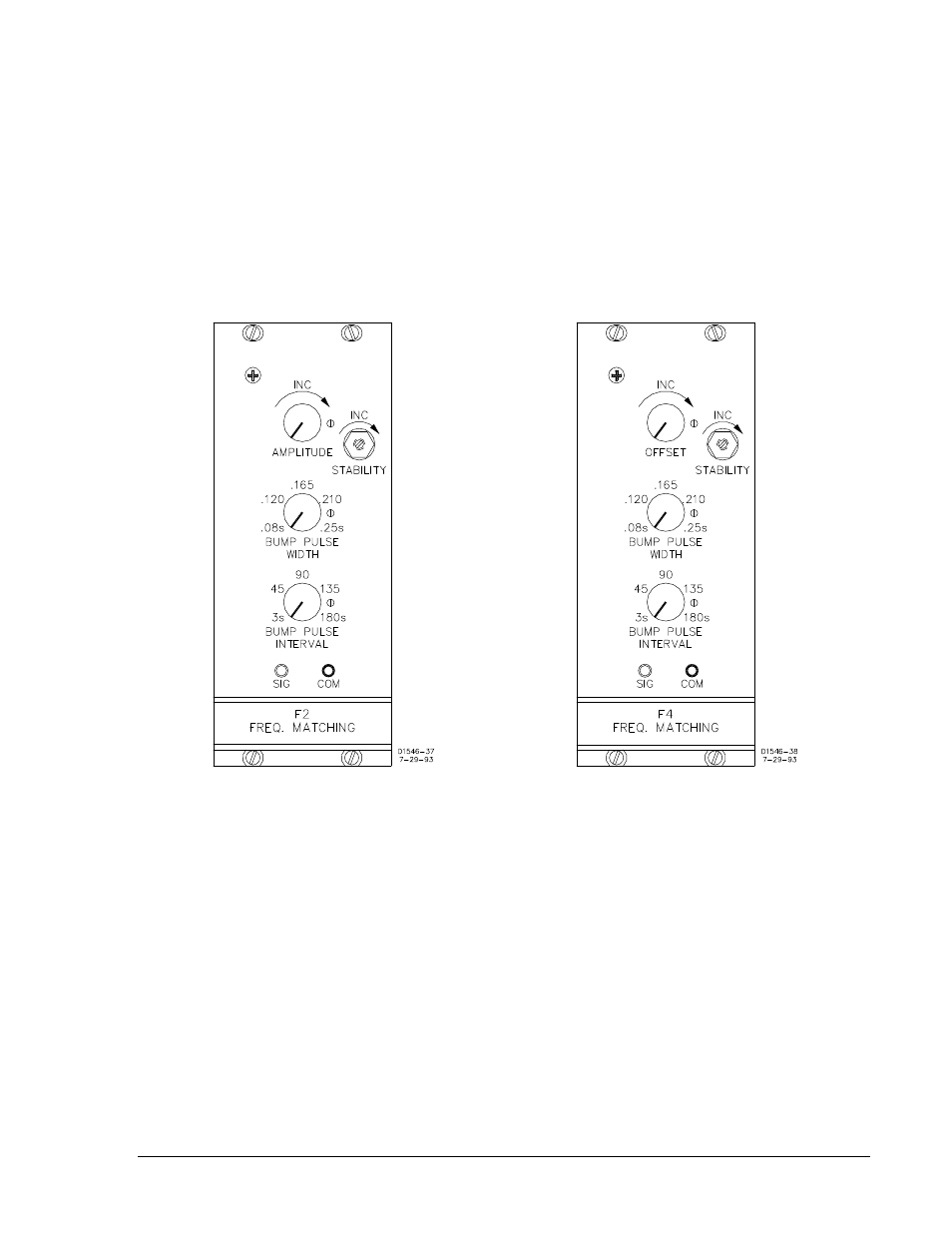Frequency matching module f2, Frequency matching module f2 -11 – Basler Electric BE1-25A User Manual
Page 81

Options F1 and F3 differ from F2 and F4 by not providing a direct signal to the summing input of the
governor. Options F2 and F4 provide a bipolar dc voltage to the summing point of the prime mover
governor. The magnitude of the correction signal is proportional to the slip frequency, with maximum
amplitude being a nominal
±8 Vdc. The rate of change is controlled by the STABILITY control (Figures 6-
11 and 6-12). The output signal is not terminated until breaker closure. To this point we have discussed
features shared by all of the F options. We will now consider the differences between F2 and F4.
The F2 option (Figure 6-11), is equipped with an AMPLITUDE control that limits the output control signal
to the summing point. This option is compatible with the Woodward 2301, 1712, 1724, and 2301A, as well
as with the Barber Colman ILS, DYNA, and Load Commander governors.
The F4 option (Figure 6-12), instead, has an OFFSET control which is used to adjust the neutral
reference of the output signal to match the neutral reference of the governor. This option is compatible
with the United Technologies/American Bosch CU 673C.
Figure 6-11. Module F2
Figure 6-12. Module F4
Frequency Matching Module F2
(See Figure 6-13.) If the bump pulser circuit does not receive the 180
° out-of-phase signal before the
adjustable interval has timed out, a bump pulse (whose width is determined by the front panel BUMP
PULSE WIDTH control) is output to the gates to change the generator speed slightly to decrease the
phase angle.
The bump pulser output, together with either the frequency low or frequency high signal, are input to the
gate. Unless disabled by a slip frequency inhibit signal, the gates will then generate an output to the
discriminator.
9146600990 Rev S
BE1-25A Relay Differences
6-11
